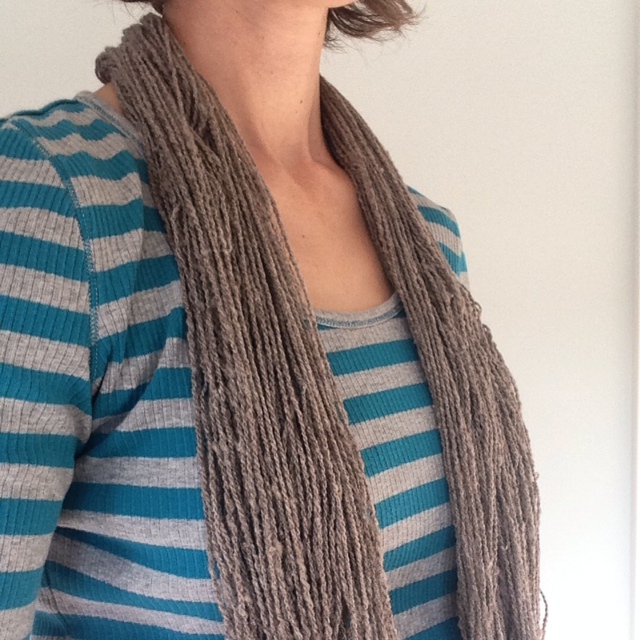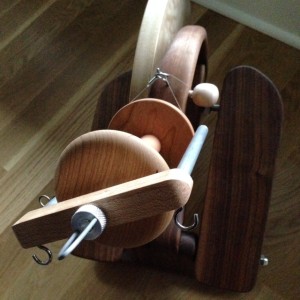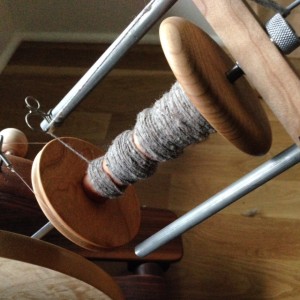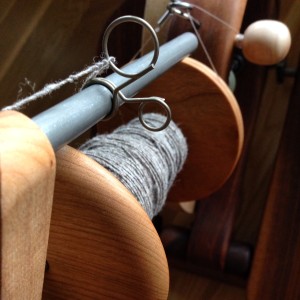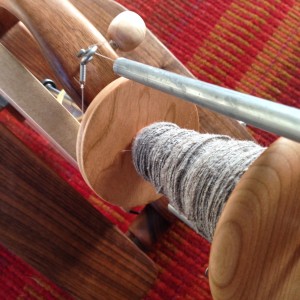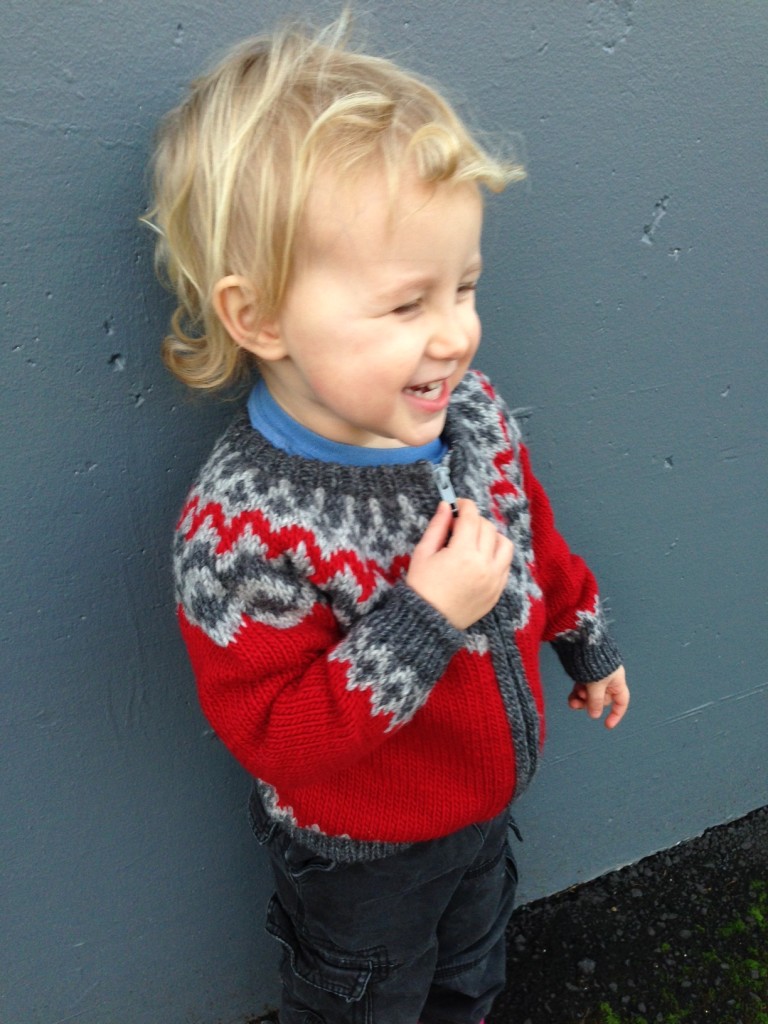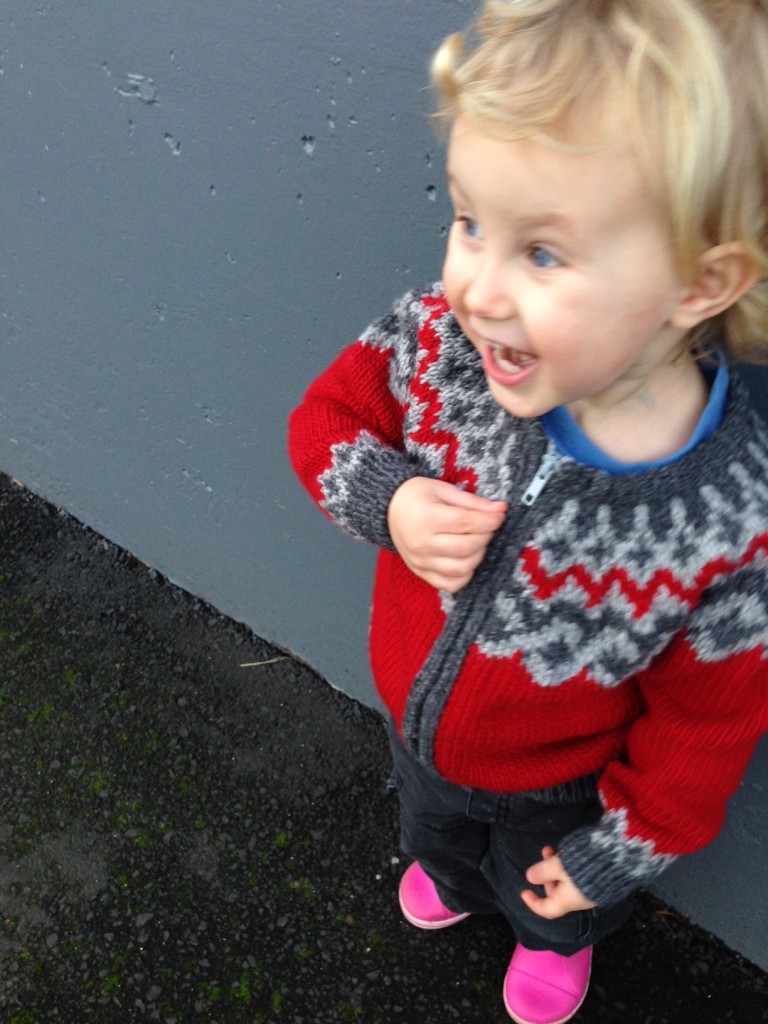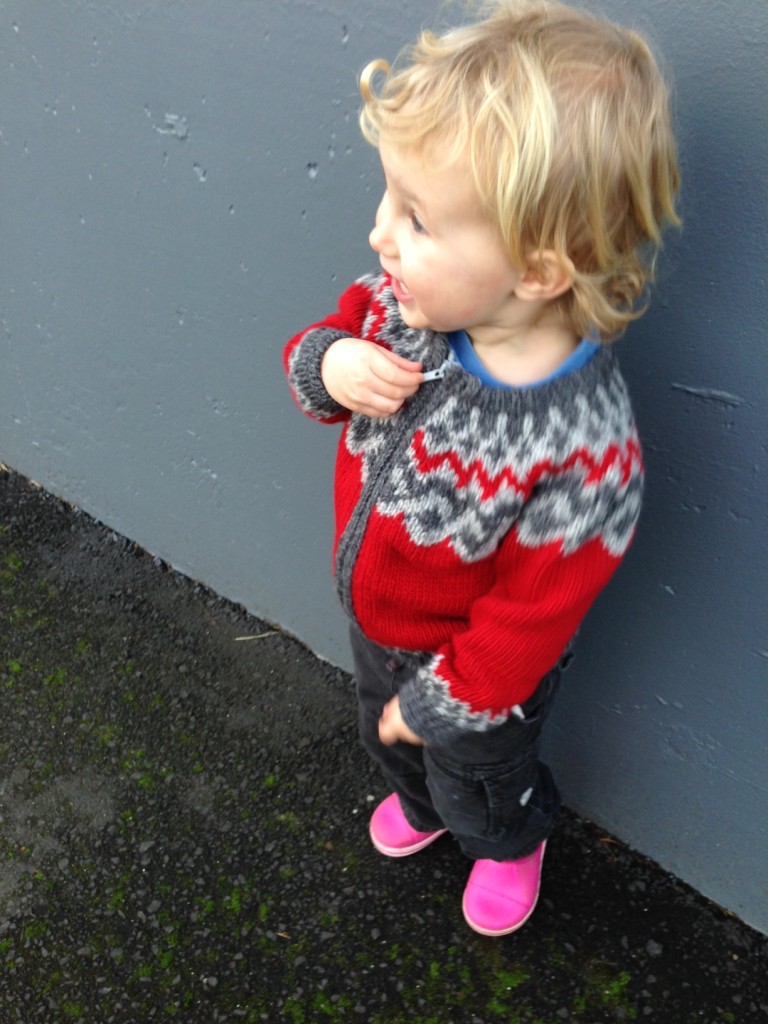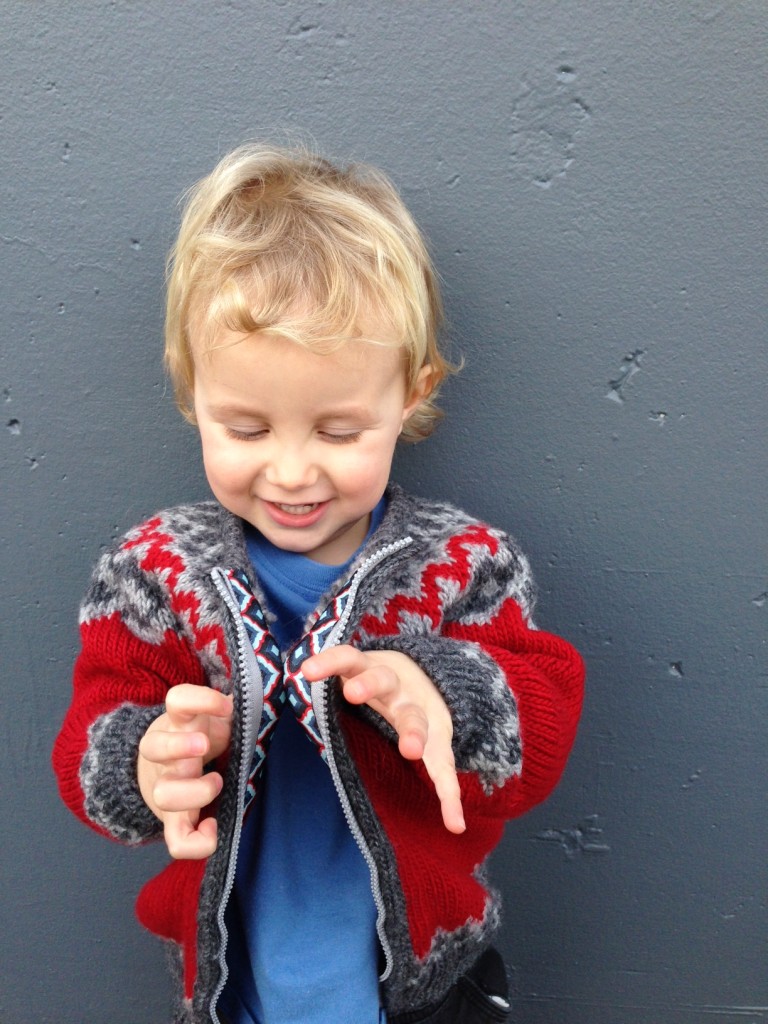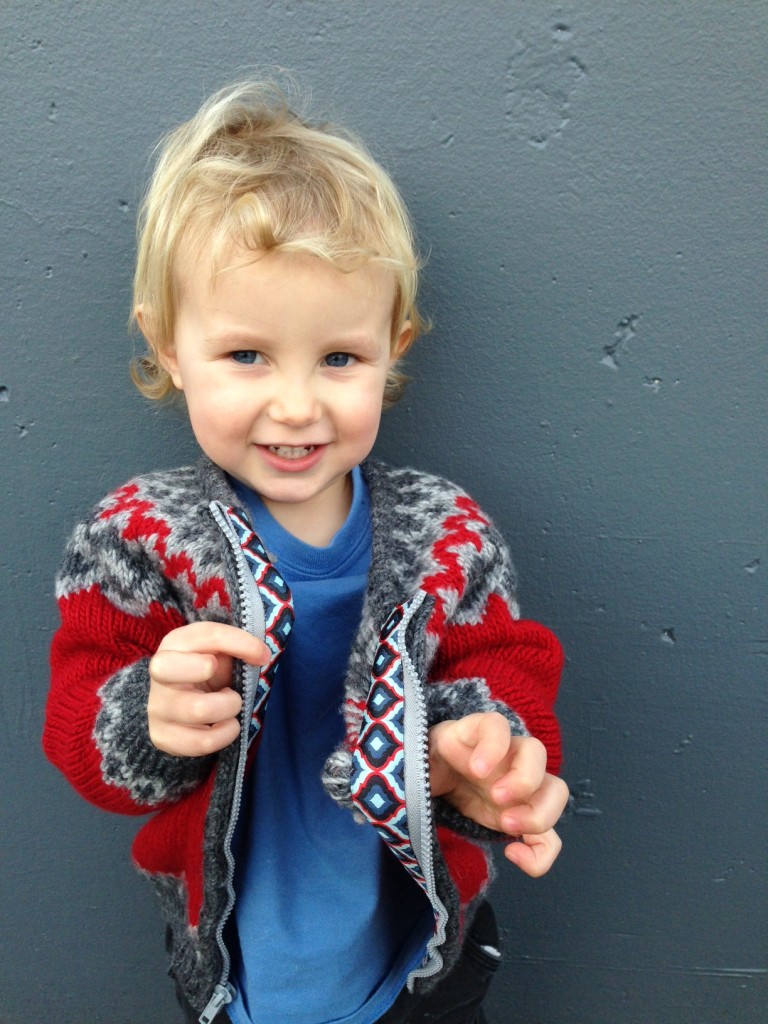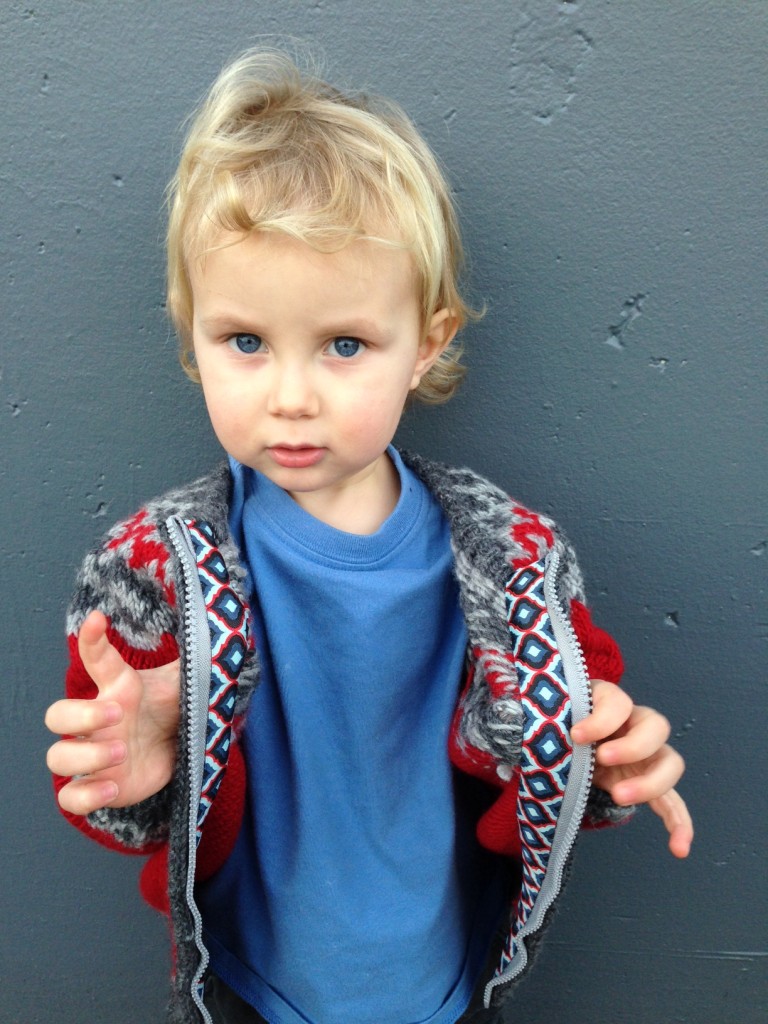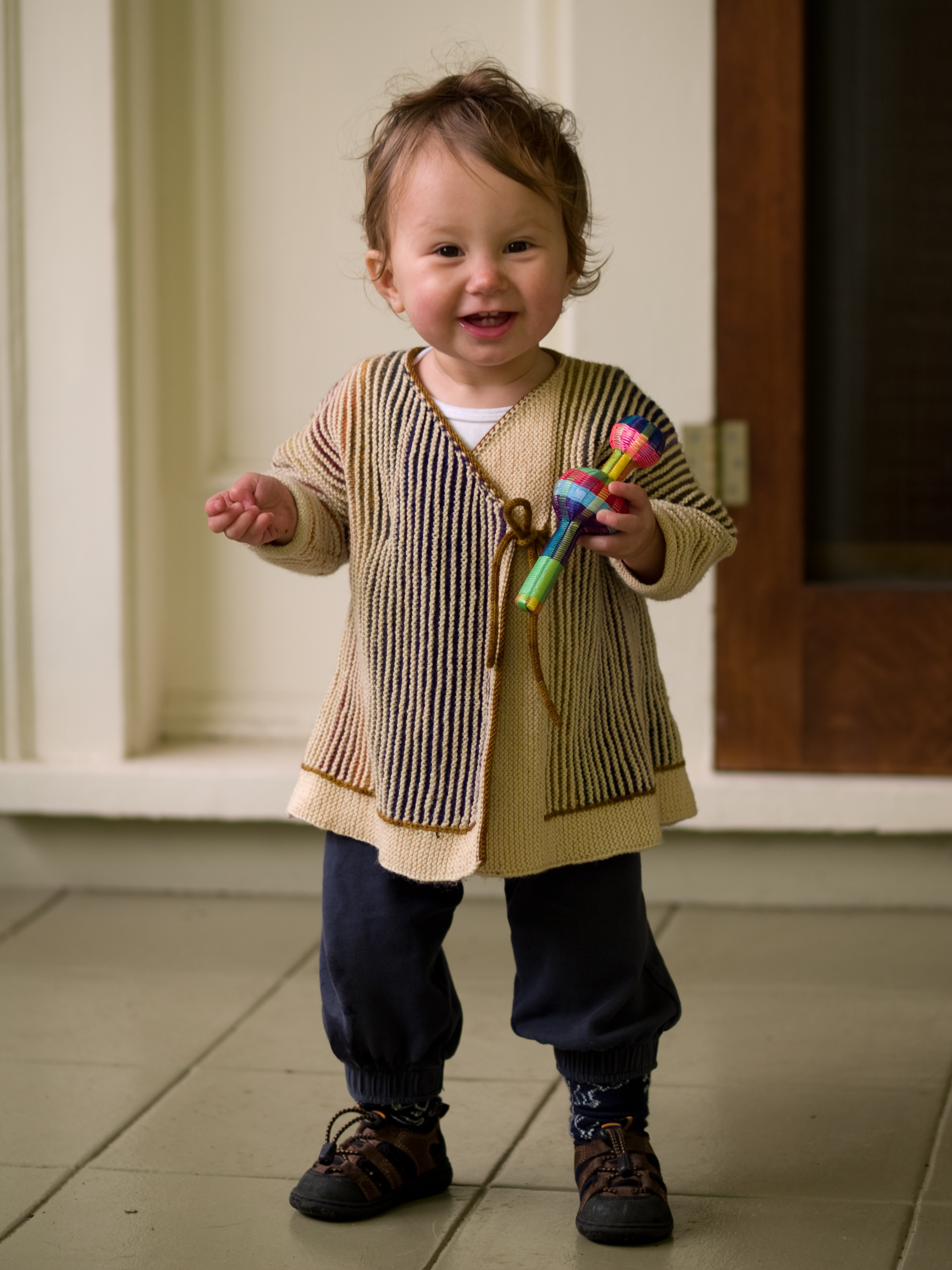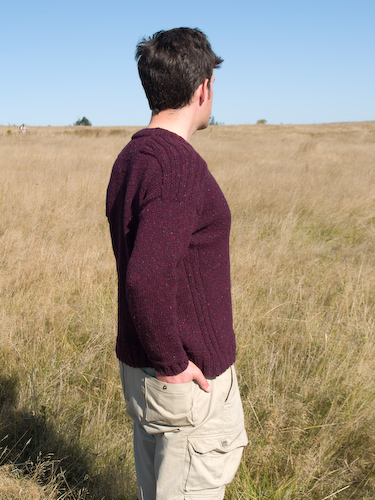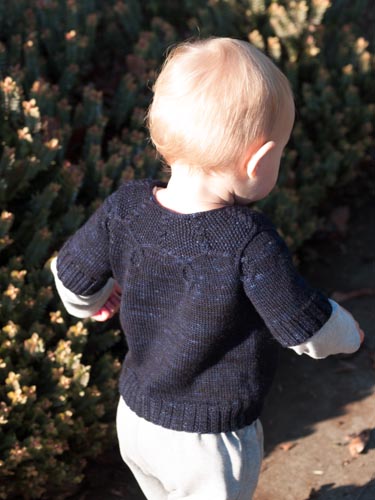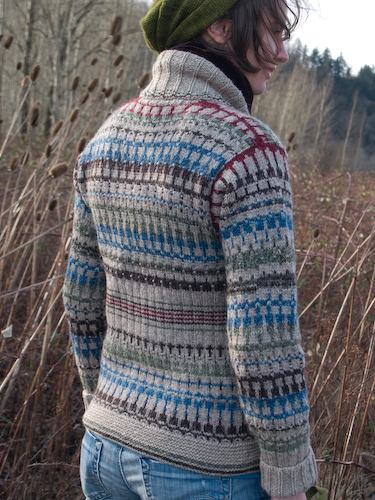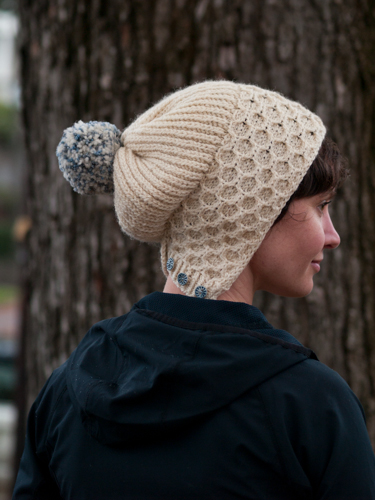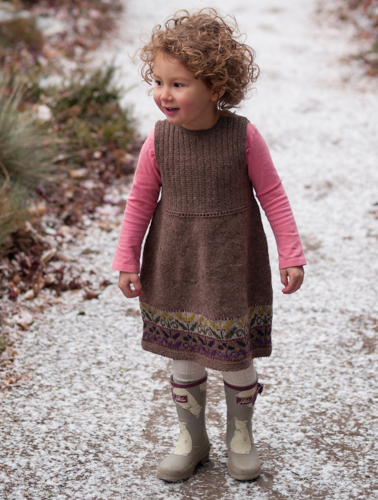I promised to show you how my first handspun came out, so here’s making good! It’s beginnerish, for sure, but seems knittable. I’ve actually gone on to make about fifty yards of some even more beginnerish Shetland/silk/mystery wool; I tried for thicker and more softly spun but ran into trouble. I was pinching so hard my hand cramped, the twist kept getting into the fiber supply anyhow, and then I botched it once and for all by underplying. Practice and learn!
Happily, someone in the Pocket Wheels group on Ravelry mentioned the existence of a Jacey Boggs Craftsy class. Even though I know next to nothing about spinning, I know the name of Jacey Boggs, for she is a renowned badass in the world of wool. I think I left burned rubber on the internet as I peeled over to Craftsy to sign up. It’s all about drafting, which is what I chiefly need to understand, and I’ve already watched the first episode on short forward draft spinning. Darn, do I feel educated! Feeling your way is fun, but kind of heavy on the sweat and frustration. Watching an expert show you what to do and why… that’s a delicious ice-cold cocktail after the exertion. Off to roust out some bits of combed top to practice holding my hands farther apart and drafting across the fiber!
